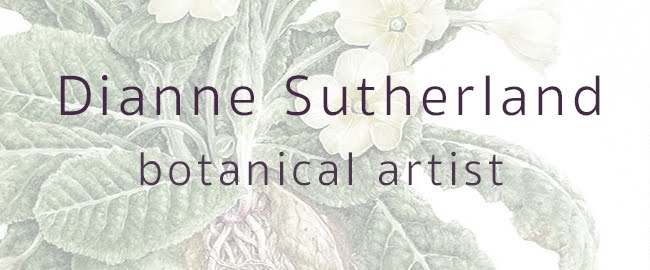Last month I competed two new works featuring the Hawthorn, Crataegus monogyna, both paintings have been submitted to the Irish Native Tree Project organised by the Irish Society of Botanical Artists. The first is and enlarged detail of fruits on the branch in autumn and the second is a scaled down drawing of the whole tree in winter, which also has life size details of the bark and branches, painted in watercolour.
Both works are not particularly large at A3 in size, they were completed on Saunders Waterford high white paper 140lb (300gsm), this paper is good because it's pretty tough and good for layering rich colour....which is definitely a requirement for these fruits, and this colour is where the Saunders Waterford paper is most beneficial, that said, it's not quite so great with pale washes, which can look a tad dull, so if you err on the pale side with watercolour there are better papers. Also, I find that I have to work that bit harder on neat edges but it comes good if you are careful with controlling the water.
The next work was the whole tree, this is a a subject slightly out of my comfort zone but I enjoyed the challenge. I decided to complete the tree in graphite because there seemed little point in using colour to paint a winter tree at this size, but the branch and bark details are in watercolour. It's important to make sure the graphite is strong enough and a range of Faber Castell pencils, grades 2H to 5B were used.
I've been working on preparing for both of these works for rather a long time, a lot of the time was spent looking for the 'right' tree in different seasons and 'the one' I wanted was discovered at a local nature reserve, known as Doxey Marshes. It was quite hard to sketch because of other bushes and trees behind and it's hard to find the best angle, I liked the fact that it was leaning and shaped by the wind, so chose this position. I also did quite a few sketchbook studies, which can be seen if you read on.
 |
| Doxey Marshes in winter, finding a suitable tree |
 |
| I began with a framework of the main branches, then the smaller branches and details |
When the tree was complete I added details of the bark, thorns and haws in watercolour and along the bottom of the drawing. Many had lichens.
 |
| Adding the bark details |
 |
The finished tree with bark and branch details, the tree in graphite and details in watercolour |
As always various sketchbook studies of the tree were made in advance of the painting, and the composition for the final painting was based on a sketchbook entry made in October 2021, but I used cut branches for colour accuracy as photographic colour is often incorrect.
Prior to the paintings - I also painted some habitat studies with black watercolour paint, which I absolutely loved doing! I make such studies because it's important that I get to know a subject..., I suppose it's what the portrait painter does, and once the decision is made to illustrate a plant, much time is spent observing it.
 |
| Sketchbook October 2022, various autumn fruits, including the Hawthorn in Autumn |
 |
| Habitat study of the tree in winter, painted with black watercolour |
 |
| Some studies of bark, thorns and lichens on the tree. All of these studies were carried out the previous year and helped with my understanding of the tree. |
About Hawthorn
Hawthorn is a fascinating tree and fortunately plenty are available in the lane where I live. It's an incredibly important tree, providing all year round food and shelter for wildlife; being a food plant for caterpillars of moths, it is also rich in pollen and nectar for insects and the antioxidant rich haws persist on the tree well into winter, which supports migrating birds and mammals. The dense thorny hedge made by the branches makes a good home for nesting birds and provides cover for other wildlife.
Flowering of the tree is long associated with May Day when there was a pagan symbol of fertility. On May Day, the branches were fashioned into celebratory garlands to mark the changing seasons, so it was also a sign to put away the winter clothes.
Like several other trees in folklore, it was advised that Hawthorn should never be taken into the house - for fear of bad luck - in fact the flowers are said to have the 'odour of death', and this was noted at the time of the plague of the Black Death during the 1300's. There is an explanation for this story, and the odour is actually attributed to the presence of trimethylamine, a chemical formed in the early stages of animal decomposition. To be honest I can't say that I've noticed a bad smell but maybe I just didn't notice because the flowers with their pretty pink anthers distracted me.
Finally: I have one more tree to paint and will write again about the final work, then they will be judged shortly, so fingers crossed, the paintings may or may not make it into the exhibition but whatever happens it was fun to do and as always I learned a lot!






















